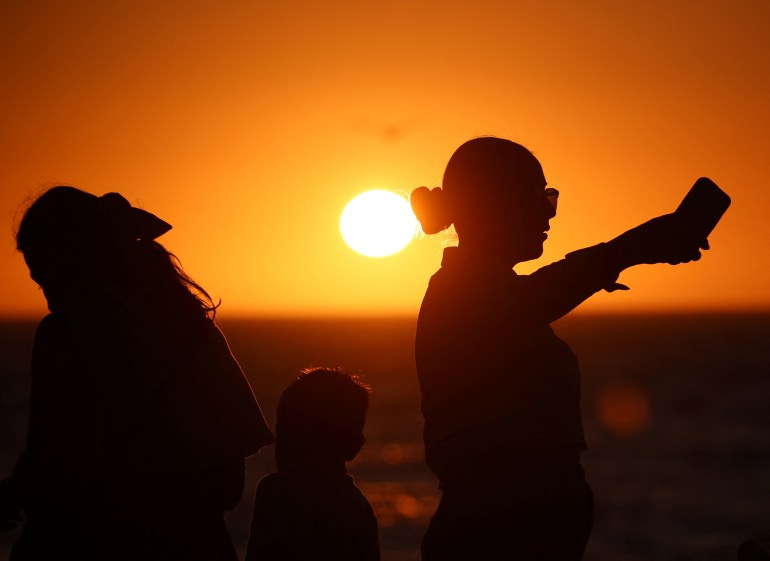The eclipse will be visible along a path starting in Mexico and then crossing through the US and into Canada.
A total solar eclipse will have millions of people across North America gazing towards the heavens on Monday as the moon completely blocks the sun for more than four minutes in some areas.
The eclipse will be visible, weather permitting, along a path starting in Mexico and then crossing through the United States and into Canada on Monday.
Eclipse fans are gathering in places along the “path of totality”, including the city of Fredericksburg in central Texas, where the total eclipse will occur shortly after 1:30pm (18:30 GMT).
That is where Michael Zeiler, a veteran eclipse chaser from New Mexico who has already witnessed 11 total eclipses across the globe, plans to be.
“First-time viewers of a total eclipse will be gobsmacked by the sight,” Zeiler said. “It will be a peak life experience.”

At up to 4 minutes and 28 seconds, this one will last longer than the total eclipse that streaked across parts of the US in 2017, which clocked in at up to 2 minutes and 42 seconds.
Al Jazeera’s Colin Baker said the four-minute eclipse will be a “data gathering bonanza” for researchers.
“Six hundred high-altitude balloons will be released. A 4km-long kite will point a measuring instrument at the sun. Rockets will launch from an island in Virginia, and jets will take off to fly inside the path of totality – noses open, cameras on,” Baker added.
“With better tools, more smartphones and more research centres under its path, more data will likely be gathered during this total solar eclipse than ever before.”
According to NASA, total eclipses can last anywhere from 10 seconds to about seven-and-a-half minutes.

Some cities along the path of totality include Mazatlan, Mexico; San Antonio, Austin and Dallas, Texas; Indianapolis, Indiana; Cleveland, Ohio; Erie, Pennsylvania; both Niagara Falls, New York, and Niagara Falls, Ontario, site of the famed waterfall, and Montreal, Quebec.
A partial eclipse will be visible in North America outside the path of totality.
About 32 million people in the US live within the path of totality, with federal officials predicting another five million people will travel to be there.
It will take about 80 minutes from the moment the moon first begins to cover the sun to the moment of totality, then another 80 minutes to complete the process in reverse.
Experts have advised eclipse viewers to use protective solar glasses to prevent eye damage from looking at the sun with the naked eye.
Only during the few minutes of totality can the sun be safely viewed without such glasses, they said.









